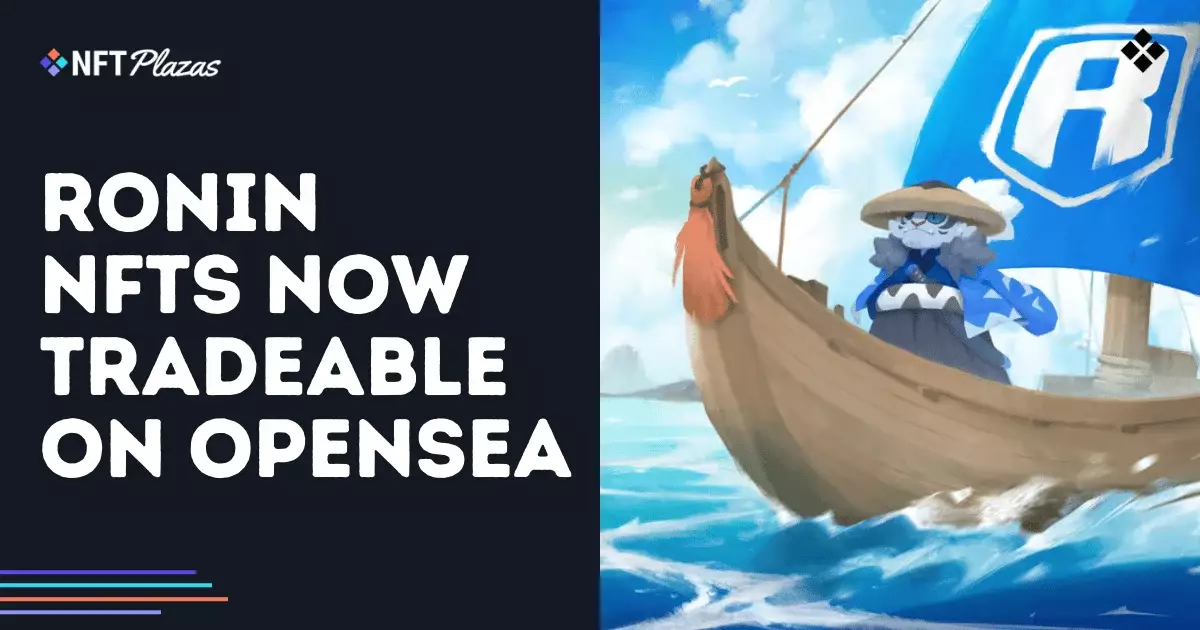The integration of NFTs sourced from the Ronin blockchain onto the expansive OpenSea marketplace marks a watershed moment in the digital collectibles landscape. It’s a monumental development that democratizes access to NFT creation and trading, effectively dismantling the barriers that have long hindered artists and creators eager to explore this digital frontier. By combining the streamlined capabilities of Ronin with OpenSea’s vast user base, the NFT community should brace itself for a surge of fresh, novel designs and unique assets that were previously confined to the insular Ronin Market.
However, the real question is whether this integration will truly empower creators or simply replicate the pitfalls seen in other platforms. The introduction of OpenSea Studio—a no-code platform designed for launching NFT collections—suggests a positive step towards inviting less tech-savvy artists into a space that often feels exclusive and daunting. Yet, accessibility isn’t always a guarantee of quality. The marketplace risks becoming flooded with low-effort projects, possibly diluting the authenticity and value of truly distinctive works. While innovation is vital, OpenSea must tread carefully to maintain a balance that fosters originality without compromising artistic integrity.
Increased Visibility and Liquidity: Opportunities or Danger Zones?
Traditionally, NFTs created on the Ronin network suffered from a lack of exposure beyond their native marketplace, which restricted the liquidity and visibility that many digital assets desperately need. With OpenSea’s reach, this integration opens substantial trading avenues. In theory, this means greater market activity and potentially higher valuations for unique pieces. However, one must consider the flip side—will this influx create a bubble of overvaluation?
In addition, OpenSea’s decision to allocate 8% of their fees from Ronin transactions to the Ronin Treasury generates an enticing revenue stream that not only bolsters the Ronin ecosystem but also invites scrutiny. As this model evolves, it bears the risk of becoming a feedback loop that disproportionately favors certain creators or genres over others. A healthy ecosystem relies on fair distribution, but financial incentives can distort this equilibrium, favoring quality over quantity.
Royalty Complexities: A Pathetic Oversight?
As a libertarian-leaning center-right observer, the news surrounding royalty enforcement should set off alarm bells. While OpenSea pledges to honor royalties for ERC-721C and ERC-1155C token standards, collections built on older standards will either miss out entirely or find themselves trapped in what could become an archaic, privileged enforcement structure. This is baffling; creators have the right to be compensated fairly for their work, not just those who happen to be utilizing newer systems. This oversight seems lamentably out of touch with the community it purports to support.
Sky Mavis’s plan to address this discrepancy is reassuring, but it raises doubts about their foresight and long-term strategy. Are they genuinely committed to facilitating a fair marketplace, or are they merely playing catch-up? We deserve transparency and an efficient plan moving forward, not another marketing strategy that promises better experiences while leaving the underlying issues unresolved.
This integration represents a pivotal moment in NFT history. The potential for growth is there, but navigating the complexity of creative rights, marketplace dynamics, and evolving technology demands a level of vigilance and integrity that shouldn’t be underestimated. In a world that thrives on innovation, will the Ronin and OpenSea partnership rise to the occasion, or will it merely become another cautionary tale?

